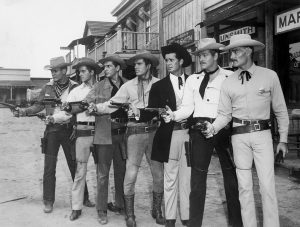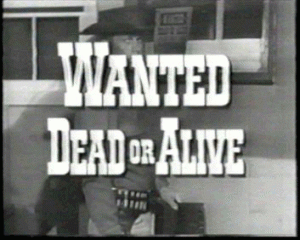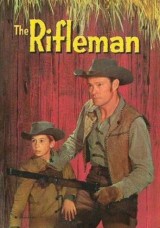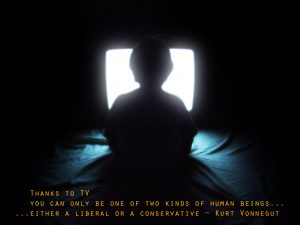Television – SHOW – HISTORY of TV
The invention of the television was the work of many individuals in the late 19th century and early 20th century. Individuals and corporations competed in various parts of the world to deliver a device that superseded previous technology. Many were compelled to capitalize on the invention and make profit, while some wanted to change the world through visual and audio communication technology.
One of the first successful TV shows!
Texaco Star Theatre was an American comedy-variety show, broadcast on radio from 1938 to 1949 and telecast (TV) from 1948 to 1956. It was one of the first successful examples of American television broadcasting, remembered as the show that gave Milton Berle the nickname “Mr. Television”.
The classic 1940–1944 version of the program, hosted by radio’s Fred Allen, was followed by a radio series on ABC (the former NBC Blue) in the spring of 1948. When Texaco (now Chevron Corporation) first took it to television on NBC on June 8, 1948, the show had a huge cultural impact. Once Texaco ended its sponsorship in the mid-1950s, the show became known as The Milton Berle Show for its final few seasons.
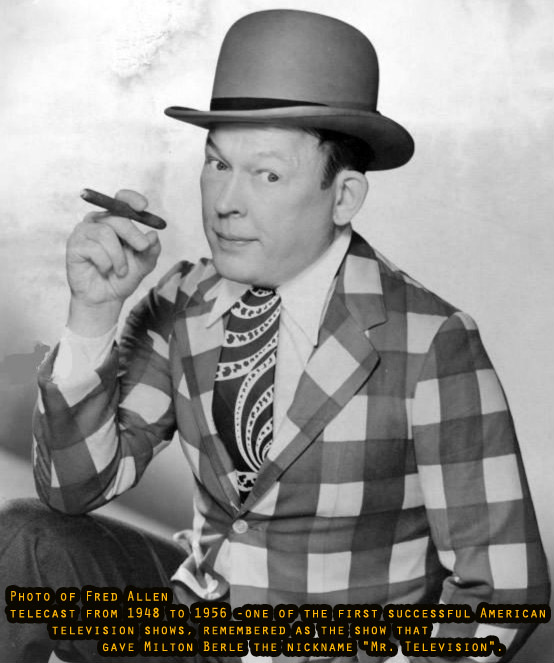 On December 25, 1926, Kenjiro Takayanagi demonstrated a TV system with a 40-line resolution that employed a CRT display at Hamamatsu Industrial High School in Japan. This was the first working example of a fully electronic television receiver. Takayanagi did not apply for a patent.
On December 25, 1926, Kenjiro Takayanagi demonstrated a TV system with a 40-line resolution that employed a CRT display at Hamamatsu Industrial High School in Japan. This was the first working example of a fully electronic television receiver. Takayanagi did not apply for a patent.

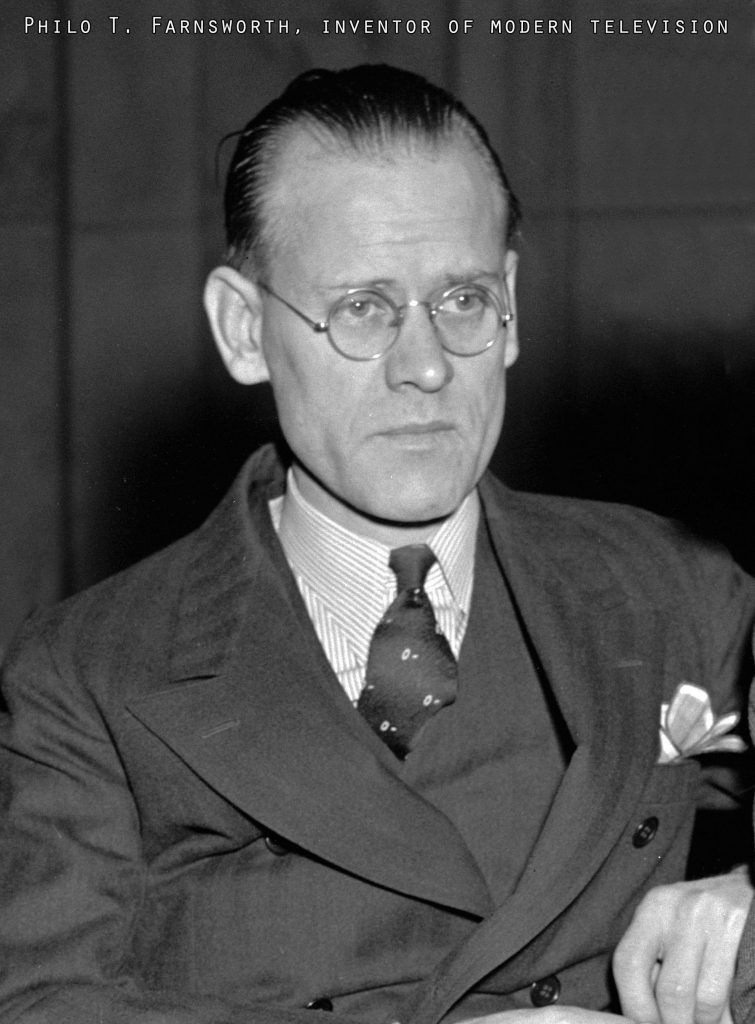
On September 7, 1927, Philo Farnsworth‘s image dissector camera tube transmitted its first image, a simple straight line, at his laboratory at 202 Green Street in San Francisco. By September 3, 1928, Farnsworth had developed the system sufficiently to hold a demonstration for the press. This is widely regarded as the first electronic television demonstration. In 1929, the system was further improved by elimination of a motor generator, so that his television system now had no mechanical parts. That year, Farnsworth transmitted the first live human images with his system, including a three and a half-inch image of his wife Elma (“Pem”) with her eyes closed (possibly due to the bright lighting required).
A television show (often simply TV show) is any content produced for broadcast via over-the-air, satellite, cable, or internet and typically viewed on a television set, excluding breaking news, advertisements, or trailers that are typically placed between shows. Television shows are most often scheduled well ahead of time and appear on electronic guides or other TV listings.
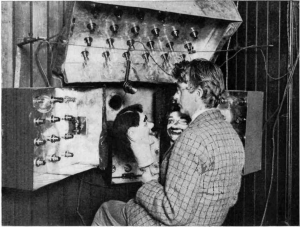
A television show might also be called a television program (British English: programme), especially if it lacks a narrative structure. A television series is usually released in episodes that follow a narrative, and are usually divided into seasons (US and Canada) or series (UK) – yearly or semiannual sets of new episodes. A show with a limited number of episodes may be called a miniseries, serial, or limited series. A one-time show may be called a “special“. A television film (“made-for-TV movie” or “television movie”) is a film that is initially broadcast on television rather than released in theaters or direct-to-video.
 Television shows can be viewed as they are broadcast in real time (live), be recorded on home video or a digital video recorder for later viewing, or be viewed on demand via a set-top box or streamed over the internet.
Television shows can be viewed as they are broadcast in real time (live), be recorded on home video or a digital video recorder for later viewing, or be viewed on demand via a set-top box or streamed over the internet. 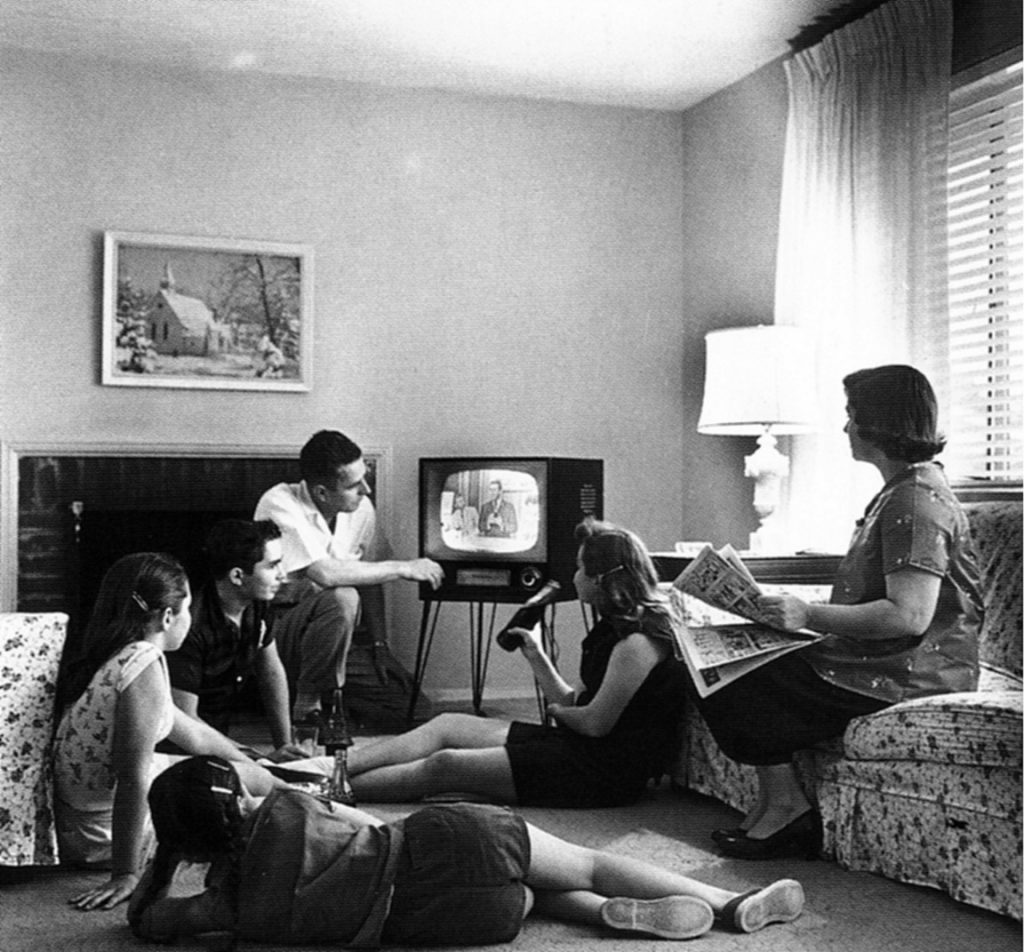
The first television shows were experimental, sporadic broadcasts viewable only within a very short range from the broadcast tower starting in the 1930s. Televised events such as the 1936 Summer Olympics in Germany, the 1937 coronation of King George VI in the UK, and David Sarnoff’s famous introduction at the 1939 New York World’s Fair in the US spurred a growth in the medium, but World War II put a halt to development until after the war.
The 1947 World Series inspired many Americans to buy their first television set and then in 1948, the popular radio show Texaco Star Theater made the move and became the first weekly televised variety show, earning host Milton Berle the name “Mr Television” and demonstrating that the medium was a stable, modern form of entertainment which could attract advertisers.
The first national live television broadcast in the US took place on September 4, 1951 when President Harry Truman‘s speech at the Japanese Peace Treaty Conference in San Francisco was transmitted over AT&T‘s transcontinental cable and microwave radio relay system to broadcast stations in local markets.
The first national color broadcast (the 1954 Tournament of Roses Parade) in the US occurred on January 1, 1954. During the following ten years most network broadcasts, and nearly all local programming, continued to be in black-and-white.
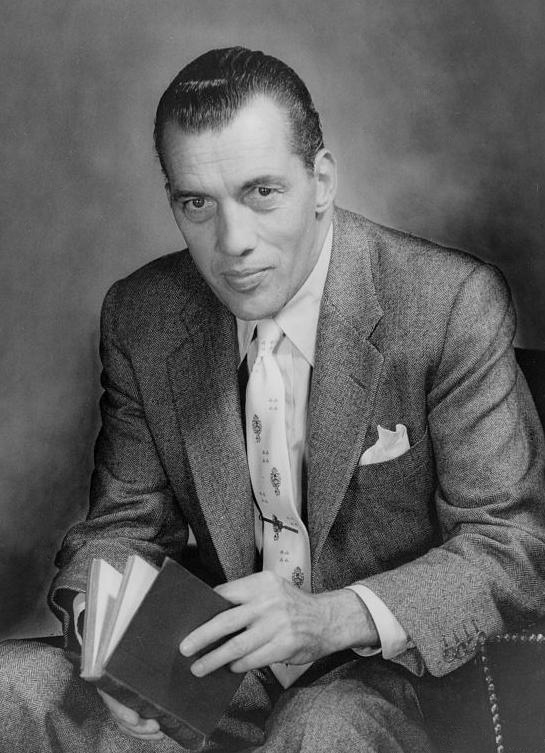

A color transition was announced for the fall of 1965, during which over half of all network prime-time programming would be broadcast in color. The first all-color prime-time season came just one year later. In 1972, the last holdout among daytime network shows converted to color, resulting in the first completely all-color network season.
Formats and genres
Television shows are more varied than most other forms of media due wide variety formats and genres that can be presented. A show may be fictional (as in comedies and dramas), or non-fictional (as in documentary, news, and reality television). It may be topical (as in the case of a local newscast and some made-for-television films), or historical (as in the case of many documentaries and fictional series). They could be primarily instructional or educational, or entertaining as is the case in situation comedy and game shows.
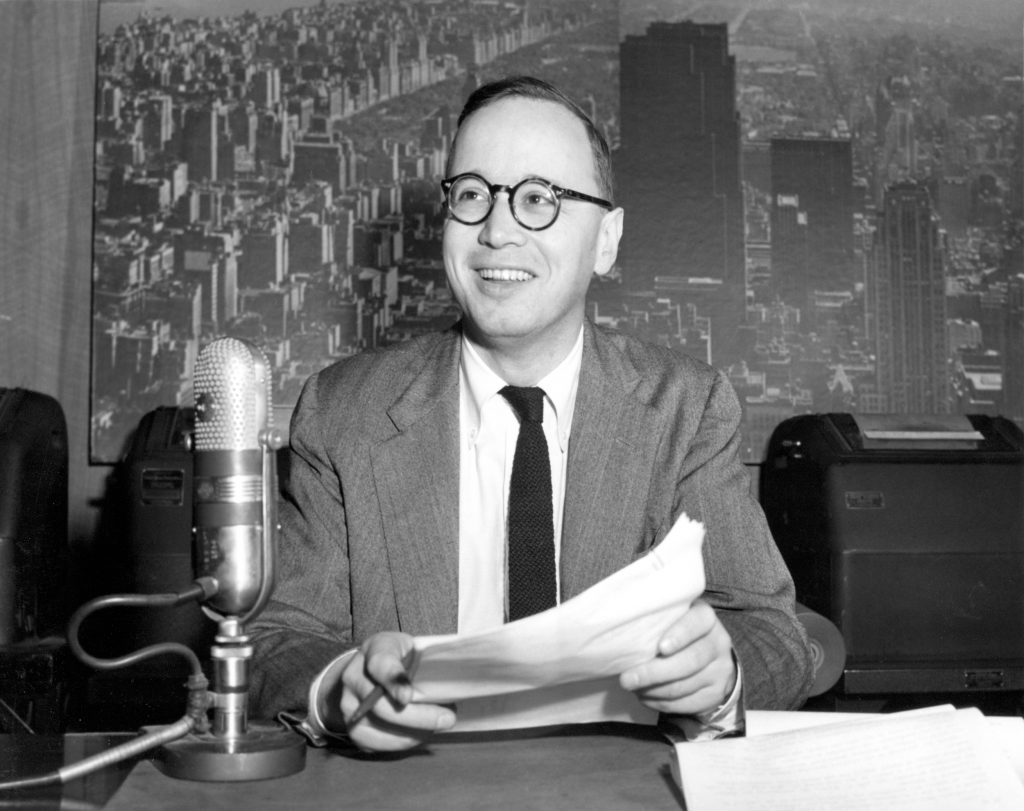
Facsimile transmission systems pioneered methods of mechanically scanning graphics in the early 19th century. The Scottish inventor Alexander Bain introduced the facsimile machine between 1843 and 1846. The English physicist Frederick Bakewell demonstrated a working laboratory version in 1851. The first practical facsimile system, working on telegraph lines, was developed and put into service by the Italian priest Giovanni Caselli from 1856 onward.
Willoughby Smith, an English electrical engineer, discovered the photoconductivity of the element selenium in 1873.
As a 23-year-old German university student, Paul Julius Gottlieb Nipkow proposed and patented the Nipkow disk in 1884. This was a spinning disk with a spiral pattern of holes in it, so each hole scanned a line of the image. Although he never built a working model of the system, variations of Nipkow’s spinning-disk “image rasterizer” became exceedingly common. Constantin Perskyi had coined the word television in a paper read to the International Electricity Congress at the International World Fair in Paris on August 24, 1900. Perskyi’s paper reviewed the existing electromechanical technologies, mentioning the work of Nipkow and others. However, it was not until 1907 that developments in amplification tube technology, by Lee de Forest and Arthur Korn among others, made the design practical.
The first demonstration of the instantaneous transmission of images was by Georges Rignoux and A. Fournier in Paris in 1909. A matrix of 64 selenium cells, individually wired to a mechanical commutator, served as an electronic retina. In the receiver, a type of Kerr cell modulated the light and a series of variously angled mirrors attached to the edge of a rotating disc scanned the modulated beam onto the display screen. A separate circuit regulated synchronization. The 8×8 pixel resolution in this proof-of-concept demonstration was just sufficient to clearly transmit individual letters of the alphabet. An updated image was transmitted “several times” each second.
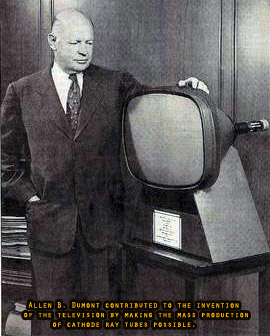 In 1911, Boris Rosing and his student Vladimir Zworykin created a system that used a mechanical mirror-drum scanner to transmit, in Zworykin’s words, “very crude images” over wires to the “Braun tube” (cathode ray tube or “CRT”) in the receiver. Moving images were not possible because, in the scanner, “the sensitivity was not enough and the selenium cell was very laggy”.
In 1911, Boris Rosing and his student Vladimir Zworykin created a system that used a mechanical mirror-drum scanner to transmit, in Zworykin’s words, “very crude images” over wires to the “Braun tube” (cathode ray tube or “CRT”) in the receiver. Moving images were not possible because, in the scanner, “the sensitivity was not enough and the selenium cell was very laggy”.
By the 1920s, when amplification made television practical, Scottish inventor John Logie Baird employed the Nipkow disk in his prototype video systems. He created his prototype in a little village called Santa Cruz on the island of Trinidad where he was recovering from an illness. He had also started work on the first color television. On March 25, 1925, Baird gave the first public demonstration of televised silhouette images in motion, at Selfridge’s Department Store in London. Since human faces had inadequate contrast to show up on his primitive system, he televised a talking, moving ventriloquist’s dummy named “Stooky Bill”, whose painted face had higher contrast. By January 26, 1926, he demonstrated the transmission of an image of a face in motion by radio. This is widely regarded as the first television demonstration in history.
The subject was Baird’s business partner Oliver Hutchinson. Baird’s system used the Nipkow disk for both scanning the image and displaying it. A bright light shining through a spinning Nipkow disk set with lenses projected a bright spot of light that swept across the subject. A selenium photoelectric tube detected the light reflected from the subject and converted it into a proportional electrical signal. This was transmitted by AM radio waves to a receiver unit, where the video signal was applied to a neon light behind a second Nipkow disk rotating synchronized with the first. The brightness of the neon lamp was varied in proportion to the brightness of each spot on the image. As each hole in the disk passed by, one scan line of the image was reproduced. Baird’s disk had 30 holes, producing an image with only 30 scan lines, just enough to recognize a human face.
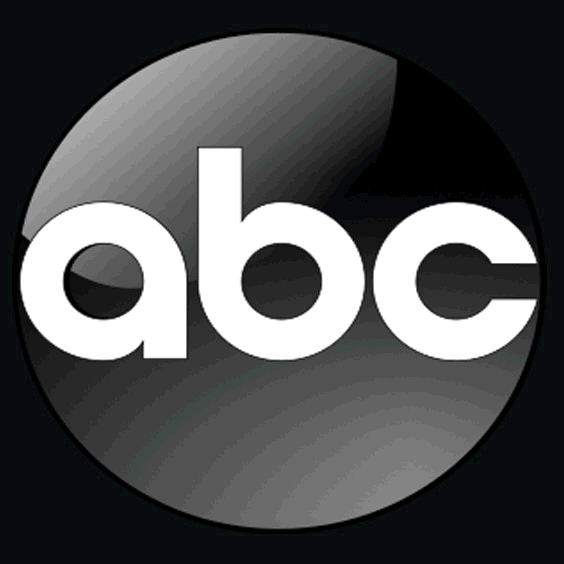 In 1927, Baird transmitted a signal over 438 miles (705 km) of telephone line between London and Glasgow. In 1928, Baird’s company (Baird Television Development Company/Cinema Television) broadcast the first transatlantic television signal, between London and New York, and the first shore-to-ship transmission. In 1929, he became involved in the first experimental mechanical television service in Germany. In November of the same year, Baird and Bernard Natan of Pathé established France’s first television company, Télévision-Baird-Natan. In 1931, he made the first outdoor remote broadcast, of The Derby. In 1932, he demonstrated ultra-short wave television. Baird’s mechanical system reached a peak of 240 lines of resolution on BBC television broadcasts in 1936, though the mechanical system did not scan the televised scene directly. Instead, a 17.5mm film was shot, rapidly developed and then scanned while the film was still wet.
In 1927, Baird transmitted a signal over 438 miles (705 km) of telephone line between London and Glasgow. In 1928, Baird’s company (Baird Television Development Company/Cinema Television) broadcast the first transatlantic television signal, between London and New York, and the first shore-to-ship transmission. In 1929, he became involved in the first experimental mechanical television service in Germany. In November of the same year, Baird and Bernard Natan of Pathé established France’s first television company, Télévision-Baird-Natan. In 1931, he made the first outdoor remote broadcast, of The Derby. In 1932, he demonstrated ultra-short wave television. Baird’s mechanical system reached a peak of 240 lines of resolution on BBC television broadcasts in 1936, though the mechanical system did not scan the televised scene directly. Instead, a 17.5mm film was shot, rapidly developed and then scanned while the film was still wet.
An American inventor, Charles Francis Jenkins, also pioneered the television. He published an article on “Motion Pictures by Wireless” in 1913, but it was not until December 1923 that he transmitted moving silhouette images for witnesses. On June 13, 1925, Jenkins publicly demonstrated the synchronized transmission of silhouette pictures. In 1925, Jenkins used a Nipkow disk and transmitted the silhouette image of a toy windmill in motion, over a distance of five miles (from a naval radio station in Maryland to his laboratory in Washington, D.C.), using a lensed disk scanner with a 48-line resolution. He was granted U.S. patent 1,544,156 (Transmitting Pictures over Wireless) on June 30, 1925 (filed March 13, 1922).
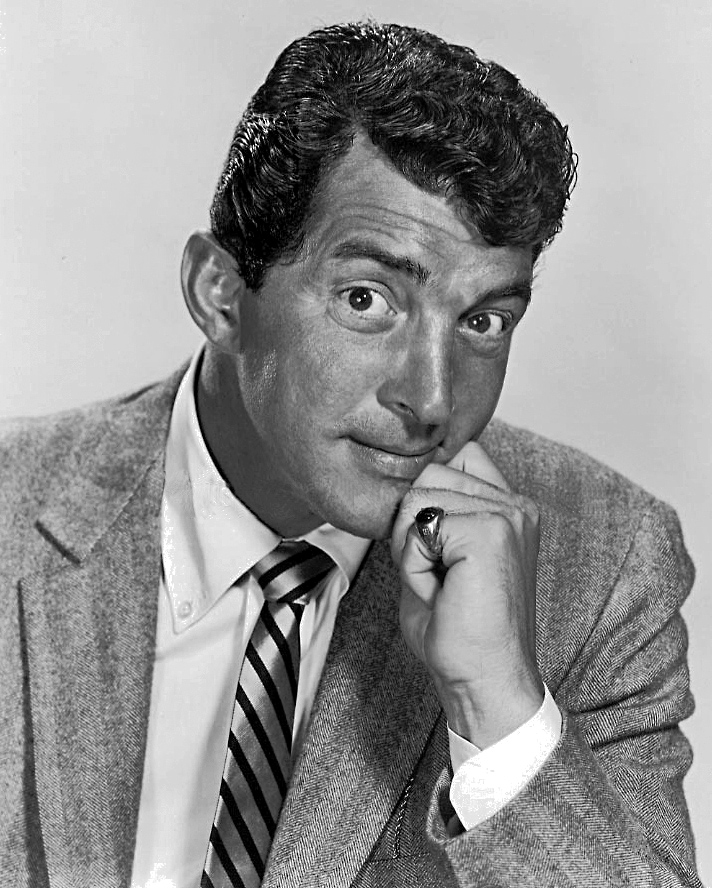
On December 25, 1925, Kenjiro Takayanagi demonstrated a television system with a 40-line resolution that employed a Nipkow disk scanner and CRT display at Hamamatsu Industrial High School in Japan. This prototype is still on display at the Takayanagi Memorial Museum at Shizuoka University, Hamamatsu Campus. By 1927, Takayanagi improved the resolution to 100 lines, which was not surpassed until 1931. By 1928, he was the first to transmit human faces in halftones. His work had an influence on the later work of Vladimir K. Zworykin. By 1935, Takayanagi had invented the first all-electronic television. His research toward creating a production model was halted by the US after Japan lost World War II.
Herbert E. Ives and Frank Gray of Bell Telephone Laboratories gave a dramatic demonstration of mechanical television on April 7, 1927. The reflected-light television system included both small and large viewing screens. The small receiver had a two-inch-wide by 2.5-inch-high screen. The large receiver had a screen 24 inches wide by 30 inches high. Both sets were capable of reproducing reasonably accurate, monochromatic moving images. Along with the pictures, the sets also received synchronized sound. The system transmitted images over two paths: first, a copper wire link from Washington to New York City, then a radio link from Whippany, New Jersey. Comparing the two transmission methods, viewers noted no difference in quality. Subjects of the telecast included Secretary of Commerce Herbert Hoover. A flying-spot scanner beam illuminated these subjects. The scanner that produced the beam had a 50-aperture disk. The disc revolved at a rate of 18 frames per second, capturing one frame about every 56 milliseconds. (Today’s systems typically transmit 30 or 60 frames per second, or one frame every 33.3 or 16.7 milliseconds respectively.) Television historian Albert Abramson underscored the significance of the Bell Labs demonstration: “It was in fact the best demonstration of a mechanical television system ever made to this time. It would be several years before any other system could even begin to compare with it in picture quality.”

A drama program usually features a set of actors playing characters in a historical or contemporary setting. The program follows their lives and adventures. Except for soap opera-type serials, many shows especially before the 1980s, remained static without story arcs, and the main characters and premise changed little. If some change happened to the characters’ lives during the episode, it was usually undone by the end. Because of this, the episodes could be broadcast in any order. Since the 1980s, there are many series that feature progressive change to the plot, the characters, or both. For instance, Hill Street Blues and St. Elsewhere were two of the first American prime time drama television series to have this kind of dramatic structure. While the later series, Babylon 5 is an extreme example of such production that had a predetermined story running over its intended five-season run.
In 2012, it was reported that television was growing into a larger component of major media companies’ revenues than film. Some also noted the increase in quality of some television programs. In 2012, Academy-Award-winning film director Steven Soderbergh, commenting on ambiguity and complexity of character and narrative, stated: “I think those qualities are now being seen on television and that people who want to see stories that have those kinds of qualities are watching television.”
When a person or company decides to create a new series, they develop the show’s elements, consisting of the concept, the characters, the crew, and cast. Then they often “pitch” it to the various networks in an attempt to find one interested enough to order a prototype first episode of the series, known as a pilot. Eric Coleman, an animation executive at Disney, told an interviewer, “One misconception is that it’s very difficult to get in and pitch your show, when the truth is that development executives at networks want very much to hear ideas. They want very much to get the word out on what types of shows they’re looking for.”
To create the pilot, the structure and team of the whole series must be put together. If audiences respond well to the pilot, the network will pick up the show to air it the next season (usually Fall).Sometimes they save it for mid-season, or request rewrites and father review (known in the industry as development hell. Other times, they pass entirely, forcing the show’s creator to “shop it around” to other networks. Many if not most shows never make it past the pilot stage.
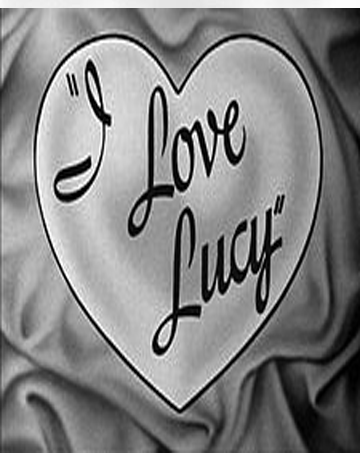 The show hires a stable of writers, who usually work in parallel: the first writer works on the first episode, the second on the second episode, etc. When all the writers have been used, episode assignment starts again with the first writer. On other shows, however, the writers work as a team. Sometimes they develop story ideas individually, and pitch them to the show’s creator, who folds them together into a script and rewrites them.
The show hires a stable of writers, who usually work in parallel: the first writer works on the first episode, the second on the second episode, etc. When all the writers have been used, episode assignment starts again with the first writer. On other shows, however, the writers work as a team. Sometimes they develop story ideas individually, and pitch them to the show’s creator, who folds them together into a script and rewrites them.
If the show is picked up, the network orders a “run” of episodes—usually only six or 13 episodes at first, though a season typically consists of at least 22 episodes. The midseason seven and last nine episodes are sometimes called the “mid-seven” and “back nine”—borrowing the colloquial terms from bowling and golf.
Principal photography
Principal photography is the actual filming of the episode. Director, actors and crew gather at a television studio or on location for filming or videoing a scene. A scene is further divided into shots, which should be planned during pre-production. Depending on scheduling, a scene may be shot in non-sequential order of the story. Conversations may be filmed twice from different camera angles, often using stand-ins, so one actor might perform all their lines in one set of shots, and then the other side of the conversation is filmed from the opposite perspective. To complete a production on time, a second unit may be filming a different scene on another set or location at the same time, using a different set of actors, an assistant director, and a second unit crew. A director of photography supervises the lighting of each shot to ensure consistency.
Live events are usually covered by Outside Broadcast crews using mobile television studios, known as scanners or OB trucks. Although varying greatly depending on the era and subject covered, these trucks were normally crewed by up to 15 skilled operators and production personnel. In the UK, for most of the 20th century, the BBC was the preeminent provider of outside broadcast coverage. BBC crews worked on almost every major event, including Royal weddings and funerals, major political and sporting events, and even drama programmes.
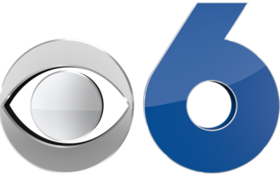
Post-production
Once principal photography is complete, producers coordinate tasks to begin the video editing. Visual and digital video effects are added to the film; this is often outsourced to companies specializing in these areas. Often music is performed with the conductor using the film as a time reference (other musical elements may be previously recorded). An editor cuts the various pieces of film together, adds the musical score and effects, determines scene transitions, and assembles the completed show.
Budgets and revenues
Most television networks throughout the world are ‘commercial’, dependent on selling advertising time or acquiring sponsors. Broadcasting executives’ main concern over their programming is on audience size. Once the number of ‘free to air’ stations was restricted by the availability of channel frequencies, but cable TV (outside the United States, satellite television) technology has allowed an expansion in the number of channels available to viewers (sometimes at premium rates) in a much more competitive environment.
In the United States, the average broadcast network drama costs $3 million an episode to produce, while cable dramas cost $2 million on average. The pilot episode may be more expensive than a regular episode. In 2004, Lost‘s two-hour pilot cost $10–$14 million, in 2008 Fringe‘s two-hour pilot cost $10 million, and in 2010, Boardwalk Empire was $18 million for the first episode. In 2011, Game of Thrones was $5–$10 million, Pan Am cost an estimated $10 million, while Terra Nova‘s two-hour pilot was between $10 to $20 million.
 Many scripted network television shows in the United States are financed through deficit financing: a studio finances the production cost of a show and a network pays a license fee to the studio for the right to air the show. This license fee does not cover the show’s production costs, leading to the deficit. Although the studio does not make its money back in the original airing of the show, it retains ownership of the show. This ownership retention allows the studio to make its money back and earn a profit through syndication and DVD and Blu-ray disc sales. This system places most of the financial risk on the studios, however a show that is a hit in the syndication and home video markets can more than make up for the misses. Although the deficit financing system places minimal financial risk on the networks, they lose out on the future profits of big hits, since they are only licensing the shows.
Many scripted network television shows in the United States are financed through deficit financing: a studio finances the production cost of a show and a network pays a license fee to the studio for the right to air the show. This license fee does not cover the show’s production costs, leading to the deficit. Although the studio does not make its money back in the original airing of the show, it retains ownership of the show. This ownership retention allows the studio to make its money back and earn a profit through syndication and DVD and Blu-ray disc sales. This system places most of the financial risk on the studios, however a show that is a hit in the syndication and home video markets can more than make up for the misses. Although the deficit financing system places minimal financial risk on the networks, they lose out on the future profits of big hits, since they are only licensing the shows.
Costs are recouped mainly by advertising revenues for broadcast networks and some cable channels, while other cable channels depend on subscription revenues. In general, advertisers, and consequently networks that depend on advertising revenues, are more interested in the number of viewers within the 18–49 age range than the total number of viewers. Advertisers are willing to pay more to advertise on shows successful with young adults because they watch less television and are harder to reach than older adults. According to Advertising Age, during the 2007–08 season, Grey’s Anatomy was able to charge $419,000 per commercial, compared to only $248,000 for a commercial during CSI, despite CSI having almost five million more viewers on average. Due to its strength in young demos, Friends was able to charge almost three times as much for a commercial as Murder, She Wrote, even though the two series had similar total viewer numbers during the seasons they were on the air together. Glee and The Office drew fewer total viewers than NCIS during the 2009–10 season, but earned an average of $272,694 and $213,617 respectively, compared to $150,708 for NCIS.
After production, the show is handed over to the television network, which sends it out to its affiliate stations, which broadcast it in the specified broadcast programming time slot. If the Nielsen ratings are good, the show is kept alive as long as possible. If not, the show is usually canceled. The show’s creators are then left to shop around remaining episodes, and the possibility of future episodes, to other networks. On especially successful series, the producers sometimes call a halt to a series on their own like Seinfeld, The Cosby Show, Corner Gas, and M*A*S*H and end it with a concluding episode, which sometimes is a big series finale.
 On rare occasions, a series that has not attracted particularly high ratings and has been canceled can be given a reprieve if home video viewership has been particularly strong. This has happened in the cases of Family Guy in the US and Peep Show in the UK.
On rare occasions, a series that has not attracted particularly high ratings and has been canceled can be given a reprieve if home video viewership has been particularly strong. This has happened in the cases of Family Guy in the US and Peep Show in the UK.
If the show is popular or lucrative, and a number of episodes (usually 100 episodes or more) are made, it goes into broadcast syndication (in the United States) where rights to broadcast the program are then resold for cash or put into a barter exchange (offered to an outlet for free in exchange for airing additional commercials elsewhere in the station’s broadcast day).
Seasons/ tv series
In North American television, a series is a connected set of television program episodes that run under the same title, possibly spanning many seasons. Since the late 1960s, this broadcast programming schedule typically includes between 20 and 26 episodes. Before then, a regular television season could average at least 30 episodes, and some TV series may have had as many as 39 episodes in a season.
 Until the 1980s, most (but certainly not all) new programs for the American broadcast networks debuted in the “fall season”, which ran from September through March and nominally contained from 24 to 26 episodes. These episodes were rebroadcast during the spring (or summer) season, from April through August. Because of cable television and the Nielsen sweeps, the “fall” season now normally extends to May. Thus, a “full season” on a broadcast network now usually runs from September through May for at least 22 episodes.
Until the 1980s, most (but certainly not all) new programs for the American broadcast networks debuted in the “fall season”, which ran from September through March and nominally contained from 24 to 26 episodes. These episodes were rebroadcast during the spring (or summer) season, from April through August. Because of cable television and the Nielsen sweeps, the “fall” season now normally extends to May. Thus, a “full season” on a broadcast network now usually runs from September through May for at least 22 episodes.
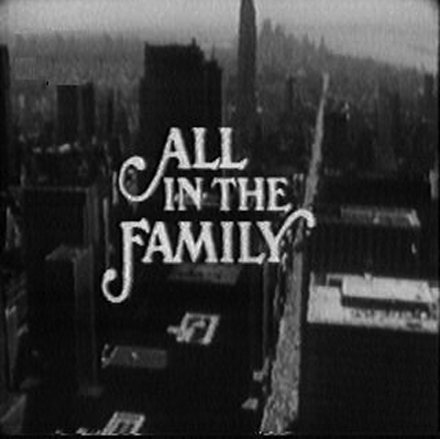 A full season is sometimes split into two separate units with a hiatus around the end of the calendar year, such as the first season of Jericho on CBS. When this split occurs, the last half of the episodes sometimes are referred to with the letter B as in “The last nine episodes (of The Sopranos) will be part of what is being called either “Season 6, Part 2” or “Season 6B”, or in “Futurama is splitting its seasons similar to how South Park does, doing half a season at a time, so this is season 6B for them.” Since the 1990s, these shorter seasons also have been referred to as “.5” or half seasons, where the run of shows between September and December is labeled “Season X”, and the second run between January and May labeled “Season X.5”. Examples of this include the 2004 incarnation of Battlestar Galactica, ABC’s FlashForward, and ABC Family’s Make It or Break It.
A full season is sometimes split into two separate units with a hiatus around the end of the calendar year, such as the first season of Jericho on CBS. When this split occurs, the last half of the episodes sometimes are referred to with the letter B as in “The last nine episodes (of The Sopranos) will be part of what is being called either “Season 6, Part 2” or “Season 6B”, or in “Futurama is splitting its seasons similar to how South Park does, doing half a season at a time, so this is season 6B for them.” Since the 1990s, these shorter seasons also have been referred to as “.5” or half seasons, where the run of shows between September and December is labeled “Season X”, and the second run between January and May labeled “Season X.5”. Examples of this include the 2004 incarnation of Battlestar Galactica, ABC’s FlashForward, and ABC Family’s Make It or Break It.
Since at least the 2000s, new broadcast television series are often ordered (funded) for just the first 10 to 13 episodes, to gauge audience interest. If a series is popular, the network places a “back nine order” and the season is completed to the regular 20 to 26 episodes. An established series which is already popular, however, will typically receive an immediate full-season order at the outset of the season. A midseason replacement is a less-expensive short-run show of generally 10–13 episodes designed to take the place of an original series that failed to garner an audience and has not been picked up. A “series finale” is the last show of the series before the show is no longer produced. (In the UK, it means the end of a season, what is known in the United States as a “season finale”).
A standard television season in United States television runs predominantly across the fall and winter, from September to May. Historically, the US networks filled their summer schedules primarily by airing reruns of their fall and winter shows, although they now typically air a more diverse mixture of reruns, burnoff runs of cancelled series, new limited or event series or reality shows, and other specials.
 Miniseries, Limited series, and Event series
Miniseries, Limited series, and Event series
While network orders for 13- or 22-episode seasons are still pervasive in the television industry, several shows have deviated from this traditional trend. Written to be close-ended and of shorter length than other shows, they are marketed with a variety of terms.
- Miniseries: the traditional term used to describe a very short closed-ended series, typically six or more hours in two or more parts (nights), similar to an extended television movie. Many early miniseries were adaptations of popular novels of the day, such as The National Dream (1974), Roots (1977), and North and South (1985). In recent years, as described by several television executives interviewed by The Hollywood Reporter, the term “miniseries” has grown to have a negative connotations within the industry, having become associated with melodrama-heavy works that were commonly produced under the format, while “limited series” or “event series” demand higher respect.
- Limited series: distinct from miniseries in that the production is seen to have potential to be renewed, but without the requirement of it having as many episodes as a typical order per season. Under the Dome, Killer Women, and Luther were marketed as limited series. Individual season-length stories of anthology series such as American Horror Story, Fargo, and True Detective are also described as “limited series”. The Primetime Emmys have had to make numerous changes to their miniseries/limited series category to accommodate anthology and other limited series
- Event series: largely considered a marketing term, falling under the general category of event television. The term can be applied to almost any new, short-run series, such as 24: Live Another Day. It has also been used to describe game shows like The Million Second Quiz which aired for just two weeks.
Running time – Format
In the United States, dramas produced for hour-long time slots typically are 39 to 42 minutes in length (excluding advertisements), while sitcoms produced for 30-minute time slots typically are 18 to 21 minutes long. There are exceptions as subscription-based TV channels (such as HBO, Starz, Cinemax, and Showtime) have episodes with 45 to 48 minutes of program, similar to Britain.
In Britain dramas typically run from 46 to 48 minutes on commercial channels, and 57 to 59 minutes on the BBC. Half-hour programmes are around 22 minutes on commercial channels, and around 28 minutes on the BBC. The longer duration on the BBC is due to the lack of advertising breaks.
In France most television shows (whether dramas, game shows or documentaries) have a duration of 52 minutes. This is the same on nearly all French networks (TF1, France 2, France 5, M6, Canal+, etc.).
 In 1928, WRGB (then W2XB) was started as the world’s first television station. It broadcast from the General Electric facility in Schenectady, NY. It was popularly known as “WGY Television”.
In 1928, WRGB (then W2XB) was started as the world’s first television station. It broadcast from the General Electric facility in Schenectady, NY. It was popularly known as “WGY Television”.
Meanwhile, in the Soviet Union, Léon Theremin had been developing a mirror drum-based television, starting with 16-line resolution in 1925, then 32 lines and eventually 64 using interlacing in 1926. As part of his thesis on May 7, 1926, Theremin electrically transmitted and then projected near-simultaneous moving images on a five-foot square screen. By 1927 he achieved an image of 100 lines, a resolution that was not surpassed until 1931 by RCA, with 120 lines.
Because only a limited number of holes could be made in the disks, and disks beyond a certain diameter became impractical, image resolution in mechanical television broadcasts was relatively low, ranging from about 30 lines up to about 120. Nevertheless, the image quality of 30-line transmissions steadily improved with technical advances, and by 1933 the UK broadcasts using the Baird system were remarkably clear. A few systems ranging into the 200-line region also went on the air. Two of these were the 180-line system that Compagnie des Compteurs (CDC) installed in Paris in 1935, and the 180-line system that Peck Television Corp. started in 1935 at station VE9AK in Montreal.
Anton Codelli (22nd. March, 1875 – † 28. April 1954), a Slovenian nobleman, was a passionate inventor. Among other things, he had devised a miniature refrigerator for cars and a new rotary engine design. Intrigued by television, he decided to apply his technical skills to the new medium. At the time, the biggest challenge in television technology was to transmit images with sufficient resolution to reproduce recognizable figures. As recounted by media historian Melita Zajc, most inventors were determined to increase the number of lines used by their systems – some were approaching what was then the magic number of 100 lines. But Baron Codelli had a different idea. In 1929, he developed a television device with a single line – but one that formed a continuous spiral on the screen. Codelli based his ingenious design on his understanding of the human eye. He knew that objects seen in peripheral vision don’t need to be as sharp as those in the center. The baron’s mechanical television system, whose image was sharpest in the middle, worked well, and he was soon able to transmit images of his wife, Ilona von Drasche-Lazar, over the air. Despite the backing of the German electronics giant Telefunken, however, Codelli’s television system never became a commercial reality. Electronic television ultimately emerged as the dominant system, and Codelli moved on to other projects. His invention was largely forgotten.
The advancement of all-electronic television (including image dissectors and other camera tubes and cathode ray tubes for the reproducer) marked the beginning of the end for mechanical systems as the dominant form of television. Mechanical TV usually only produced small images. It was the main type of TV until the 1930s. The last mechanical television broadcasts ended in 1939 at stations run by a handful of public universities in the United States.
In 1897, J. J. Thomson, an English physicist, in his three famous experiments was able to deflect cathode rays, a fundamental function of the modern Cathode Ray Tube (CRT). The earliest version of the CRT was invented by the German physicist Karl Ferdinand Braun in 1897 and is also known as the Braun tube. It was a cold-cathode diode, a modification of the Crookes tube with a phosphor-coated screen. A cathode ray tube was successfully demonstrated as a displaying device by the German Professor Max Dieckmann in 1906, his experimental results were published by the journal Scientific American in 1909. In 1908 Alan Archibald Campbell-Swinton, fellow of the Royal Society (UK), published a letter in the scientific journal Nature in which he described how “distant electric vision” could be achieved by using a cathode ray tube (or “Braun” tube) as both a transmitting and receiving device. He expanded on his vision in a speech given in London in 1911 and reported in The Times and the Journal of the Röntgen Society. In a letter to Nature published in October 1926, Campbell-Swinton also announced the results of some “not very successful experiments” he had conducted with G. M. Minchin and J. C. M. Stanton. They had attempted to generate an electrical signal by projecting an image onto a selenium-coated metal plate that was simultaneously scanned by a cathode ray beam. These experiments were conducted before March 1914, when Minchin died. They were later repeated in 1937 by two different teams, H. Miller and J. W. Strange from EMI, and H. Iams and A. Rose from RCA. Both teams succeeded in transmitting “very faint” images with the original Campbell-Swinton’s selenium-coated plate. Although others had experimented with using a cathode ray tube as a receiver, the concept of using one as a transmitter was novel. The first cathode ray tube to use a hot cathode was developed by John B. Johnson (who gave his name to the term Johnson noise) and Harry Weiner Weinhart of Western Electric, and became a commercial product in 1922.
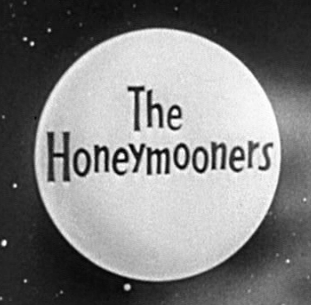 In 1926, Hungarian engineer Kálmán Tihanyi designed a television system utilizing fully electronic scanning and display elements and employing the principle of “charge storage” within the scanning (or “camera”) tube. The problem of low sensitivity to light resulting in low electrical output from transmitting or “camera” tubes would be solved with the introduction of charge-storage technology by Kálmán Tihanyi beginning in 1924. His solution was a camera tube that accumulated and stored electrical charges (“photoelectrons”) within the tube throughout each scanning cycle. The device was first described in a patent application he filed in Hungary in March 1926 for a television system he dubbed “Radioskop”. After further refinements included in a 1928 patent application, Tihanyi’s patent was declared void in Great Britain in 1930, and so he applied for patents in the United States. Although his breakthrough would be incorporated into the design of RCA‘s “iconoscope” in 1931, the U.S. patent for Tihanyi’s transmitting tube would not be granted until May 1939. The patent for his receiving tube had been granted the previous October. Both patents had been purchased by RCA prior to their approval. Charge storage remains a basic principle in the design of imaging devices for television to the present day.
In 1926, Hungarian engineer Kálmán Tihanyi designed a television system utilizing fully electronic scanning and display elements and employing the principle of “charge storage” within the scanning (or “camera”) tube. The problem of low sensitivity to light resulting in low electrical output from transmitting or “camera” tubes would be solved with the introduction of charge-storage technology by Kálmán Tihanyi beginning in 1924. His solution was a camera tube that accumulated and stored electrical charges (“photoelectrons”) within the tube throughout each scanning cycle. The device was first described in a patent application he filed in Hungary in March 1926 for a television system he dubbed “Radioskop”. After further refinements included in a 1928 patent application, Tihanyi’s patent was declared void in Great Britain in 1930, and so he applied for patents in the United States. Although his breakthrough would be incorporated into the design of RCA‘s “iconoscope” in 1931, the U.S. patent for Tihanyi’s transmitting tube would not be granted until May 1939. The patent for his receiving tube had been granted the previous October. Both patents had been purchased by RCA prior to their approval. Charge storage remains a basic principle in the design of imaging devices for television to the present day.
On December 25, 1926, Kenjiro Takayanagi demonstrated a TV system with a 40-line resolution that employed a CRT display at Hamamatsu Industrial High School in Japan. This was the first working example of a fully electronic television receiver. Takayanagi did not apply for a patent.
On September 7, 1927, Philo Farnsworth‘s image dissector camera tube transmitted its first image, a simple straight line, at his laboratory at 202 Green Street in San Francisco. By September 3, 1928, Farnsworth had developed the system sufficiently to hold a demonstration for the press. This is widely regarded as the first electronic television demonstration. In 1929, the system was further improved by elimination of a motor generator, so that his television system now had no mechanical parts. That year, Farnsworth transmitted the first live human images with his system, including a three and a half-inch image of his wife Elma (“Pem”) with her eyes closed (possibly due to the bright lighting required).
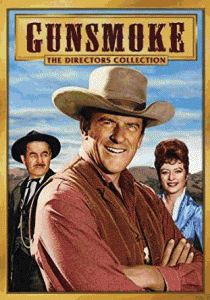 Vladimir Zworykin demonstrates electronic television (1929)
Vladimir Zworykin demonstrates electronic television (1929) 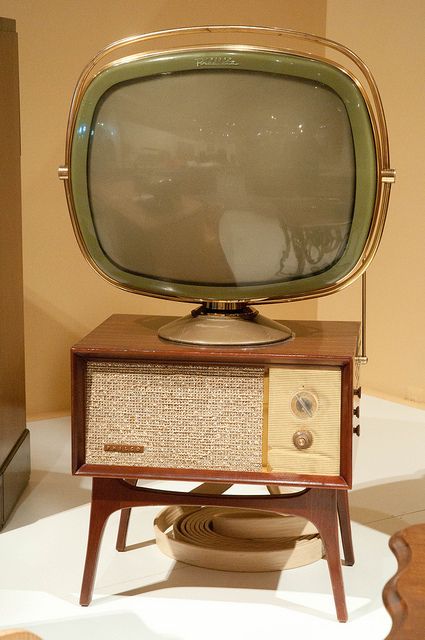
Meanwhile, Vladimir Zworykin was also experimenting with the cathode ray tube to create and show images. While working for Westinghouse Electric in 1923, he began to develop an electronic camera tube. But in a 1925 demonstration, the image was dim, had low contrast and poor definition, and was stationary. Zworykin’s imaging tube never got beyond the laboratory stage. But RCA, which acquired the Westinghouse patent, asserted that the patent for Farnsworth’s 1927 image dissector was written so broadly that it would exclude any other electronic imaging device. Thus RCA, on the basis of Zworykin’s 1923 patent application, filed a patent interference suit against Farnsworth. The U.S. Patent Office examiner disagreed in a 1935 decision, finding priority of invention for Farnsworth against Zworykin. Farnsworth claimed that Zworykin’s 1923 system would be unable to produce an electrical image of the type to challenge his patent.
Zworykin received a patent in 1928 for a color transmission version of his 1923 patent application, he also divided his original application in 1931. Zworykin was unable or unwilling to introduce evidence of a working model of his tube that was based on his 1923 patent application. In September 1939, after losing an appeal in the courts and determined to go forward with the commercial manufacturing of television equipment, RCA agreed to pay Farnsworth US$1 million over a ten-year period, in addition to license payments, to use Farnsworth’s patents.

In 1933 RCA introduced an improved camera tube that relied on Tihanyi’s charge storage principle. Dubbed the Iconoscope by Zworykin, the new tube had a light sensitivity of about 75,000 lux, and thus was claimed to be much more sensitive than Farnsworth’s image dissector. However, Farnsworth had overcome his power problems with his Image Dissector through the invention of a completely unique “multipactor” device that he began work on in 1930, and demonstrated in 1931. This small tube could amplify a signal reportedly to the 60th power or better and showed great promise in all fields of electronics. A problem with the multipactor, unfortunately, was that it wore out at an unsatisfactory rate.
At the Berlin Radio Show in August 1931, Manfred von Ardenne gave a public demonstration of a television system using a CRT for both transmission and reception. However, Ardenne had not developed a camera tube, using the CRT instead as a flying-spot scanner to scan slides and film.[63] Philo Farnsworth gave the world’s first public demonstration of an all-electronic television system, using a live camera, at the Franklin Institute of Philadelphia on August 25, 1934, and for ten days afterwards.
In Britain the EMI engineering team led by Isaac Shoenberg applied in 1932 for a patent for a new device they dubbed “the Emitron”, which formed the heart of the cameras they designed for the BBC. On November 2, 1936, a 405-line broadcasting service employing the Emitron began at studios in Alexandra Palace, and transmitted from a specially built mast atop one of the Victorian building’s towers. It alternated for a short time with Baird’s mechanical system in adjoining studios, but was more reliable and visibly superior. This was the world’s first regular high-definition television service.
The original American iconoscope was noisy, had a high ratio of interference to signal, and ultimately gave disappointing results, especially when compared to the high definition mechanical scanning systems then becoming available.]The EMI team under the supervision of Isaac Shoenberg analyzed how the iconoscope (or Emitron) produces an electronic signal and concluded that its real efficiency was only about 5% of the theoretical maximum. They solved this problem by developing and patenting in 1934 two new camera tubes dubbed super-Emitron and CPS Emitron.
The super-Emitron was between ten and fifteen times more sensitive than the original Emitron and iconoscope tubes and, in some cases, this ratio was considerably greater. It was used for an outside broadcasting by the BBC, for the first time, on Armistice Day 1937, when the general public could watch in a television set how the King lay a wreath at the Cenotaph. This was the first time that anyone could broadcast a live street scene from cameras installed on the roof of neighbor buildings, because neither Farnsworth nor RCA could do the same before the 1939 New York World’s Fair.
 Ad for the beginning of experimental television broadcasting in New York City by RCA in 1939
Ad for the beginning of experimental television broadcasting in New York City by RCA in 1939
On the other hand, in 1934, Zworykin shared some patent rights with the German licensee company Telefunken. The “image iconoscope” (“Superikonoskop” in Germany) was produced as a result of the collaboration. This tube is essentially identical to the super-Emitron.The production and commercialization of the super-Emitron and image iconoscope in Europe were not affected by the patent war between Zworykin and Farnsworth, because Dieckmann and Hell had priority in Germany for the invention of the image dissector, having submitted a patent application for their Lichtelektrische Bildzerlegerröhre für Fernseher (Photoelectric Image Dissector Tube for Television) in Germany in 1925, two years before Farnsworth did the same in the United States. The image iconoscope (Superikonoskop) became the industrial standard for public broadcasting in Europe from 1936 until 1960, when it was replaced by the vidicon and plumbicon tubes. Indeed, it was the representative of the European tradition in electronic tubes competing against the American tradition represented by the image orthicon.The German company Heimann produced the Superikonoskop for the 1936 Berlin Olympic Games, later Heimann also produced and commercialized it from 1940 to 1955, finally the Dutch company Philips produced and commercialized the image iconoscope and multicon from 1952 to 1958.
American television broadcasting at the time consisted of a variety of markets in a wide range of sizes, each competing for programming and dominance with separate technology, until deals were made and standards agreed upon in 1941. RCA, for example, used only Iconoscopes in the New York area, but Farnsworth Image Dissectors in Philadelphia and San Francisco. In September 1939, RCA agreed to pay the Farnsworth Television and Radio Corporation royalties over the next ten years for access to Farnsworth’s patents. With this historic agreement in place, RCA integrated much of what was best about the Farnsworth Technology into their systems. In 1941, the United States implemented 525-line television.

The world’s first 625-line television standard was designed in the Soviet Union in 1944, and became a national standard in 1946.] The first broadcast in 625-line standard occurred in 1948 in Moscow.] The concept of 625 lines per frame was subsequently implemented in the European CCIR standard.
In 1936, Kálmán Tihanyi described the principle of plasma display, the first flat panel display system.
In 1978, James P Mitchell described, prototyped and demonstrated what was perhaps the earliest monochromatic flat panel LED television display LED Display targeted at replacing the CRT.
Color television
The basic idea of using three monochrome images to produce a color image had been experimented with almost as soon as black-and-white televisions had first been built. Among the earliest published proposals for television was one by Maurice Le Blanc in 1880 for a color system, including the first mentions in television literature of line and frame scanning, although he gave no practical details. Polish inventor Jan Szczepanik patented a color television system in 1897, using a selenium photoelectric cell at the transmitter and an electromagnet controlling an oscillating mirror and a moving prism at the receiver. But his system contained no means of analyzing the spectrum of colors at the transmitting end, and could not have worked as he described it. Another inventor, Hovannes Adamian, also experimented with color television as early as 1907. The first color television project is claimed by him, and was patented in Germany on March 31, 1908, patent № 197183, then in Britain, on April 1, 1908, patent № 7219, in France (patent № 390326) and in Russia in 1910 (patent № 17912).

Scottish inventor John Logie Baird demonstrated the world’s first color transmission on July 3, 1928, using scanning discs at the transmitting and receiving ends with three spirals of apertures, each spiral with filters of a different primary color; and three light sources at the receiving end, with a commutator to alternate their illumination. Baird also made the world’s first color broadcast on February 4, 1938, sending a mechanically scanned 120-line image from Baird’s Crystal Palace studios to a projection screen at London‘s Dominion Theatre.
Mechanically scanned color television was also demonstrated by Bell Laboratories in June 1929 using three complete systems of photoelectric cells, amplifiers, glow-tubes and color filters, with a series of mirrors to superimpose the red, green and blue images into one full color image.
The first practical hybrid system was again pioneered by John Logie Baird. In 1940 he publicly demonstrated a color television combining a traditional black-and-white display with a rotating colored disc. This device was very “deep”, but was later improved with a mirror folding the light path into an entirely practical device resembling a large conventional console. However, Baird was not happy with the design, and as early as 1944 had commented to a British government committee that a fully electronic device would be better.
Mexican inventor Guillermo González Camarena also played an important role in early TV. His experiments with TV (known as telectroescopía at first) began in 1931 and led to a patent for the “trichromatic field sequential system” color television in 1940.
In 1939, Hungarian engineer Peter Carl Goldmark introduced an electro-mechanical system while at CBS, which contained an Iconoscope sensor. The CBS field-sequential color system was partly mechanical, with a disc made of red, blue, and green filters spinning inside the television camera at 1,200 rpm, and a similar disc spinning in synchronization in front of the cathode ray tube inside the receiver set. The system was first demonstrated to the Federal Communications Commission (FCC) on August 29, 1940, and shown to the press on September 4.

CBS began experimental color field tests using film as early as August 28, 1940, and live cameras by November 12. NBC (owned by RCA) made its first field test of color television on February 20, 1941. CBS began daily color field tests on June 1, 1941. These color systems were not compatible with existing black-and-white television sets, and as no color television sets were available to the public at this time, viewing of the color field tests was restricted to RCA and CBS engineers and the invited press. The War Production Board halted the manufacture of television and radio equipment for civilian use from April 22, 1942, to August 20, 1945, limiting any opportunity to introduce color television to the general public.
As early as 1940, Baird had started work on a fully electronic system he called the “Telechrome“. Early Telechrome devices used two electron guns aimed at either side of a phosphor plate. Using cyan and magenta phosphors, a reasonable limited-color image could be obtained. He also demonstrated the same system using monochrome signals to produce a 3D image (called “stereoscopic” at the time). A demonstration on August 16, 1944 was the first example of a practical color television system. Work on the Telechrome continued and plans were made to introduce a three-gun version for full color. This used a patterned version of the phosphor plate, with the guns aimed at ridges on one side of the plate. However, Baird’s untimely death in 1946 ended development of the Telechrome system.
Similar concepts were common through the 1940s and 1950s, differing primarily in the way they re-combined the colors generated by the three guns. The Geer tube was similar to Baird’s concept, but used small pyramids with the phosphors deposited on their outside faces, instead of Baird’s 3D patterning on a flat surface. The Penetron used three layers of phosphor on top of each other and increased the power of the beam to reach the upper layers when drawing those colors. The Chromatron used a set of focusing wires to select the colored phosphors arranged in vertical stripes on the tube.
One of the great technical challenges of introducing color broadcast television was the desire to conserve bandwidth, potentially three times that of the existing black-and-white standards, and not use an excessive amount of radio spectrum. In the United States, after considerable research, the National Television Systems Committee approved an all-electronic Compatible color system developed by RCA, which encoded the color information separately from the brightness information and greatly reduced the resolution of the color information in order to conserve bandwidth. The brightness image remained compatible with existing black-and-white television sets at slightly reduced resolution, while color televisions could decode the extra information in the signal and produce a limited-resolution color display. The higher resolution black-and-white and lower resolution color images combine in the brain to produce a seemingly high-resolution color image. The NTSC standard represented a major technical achievement.
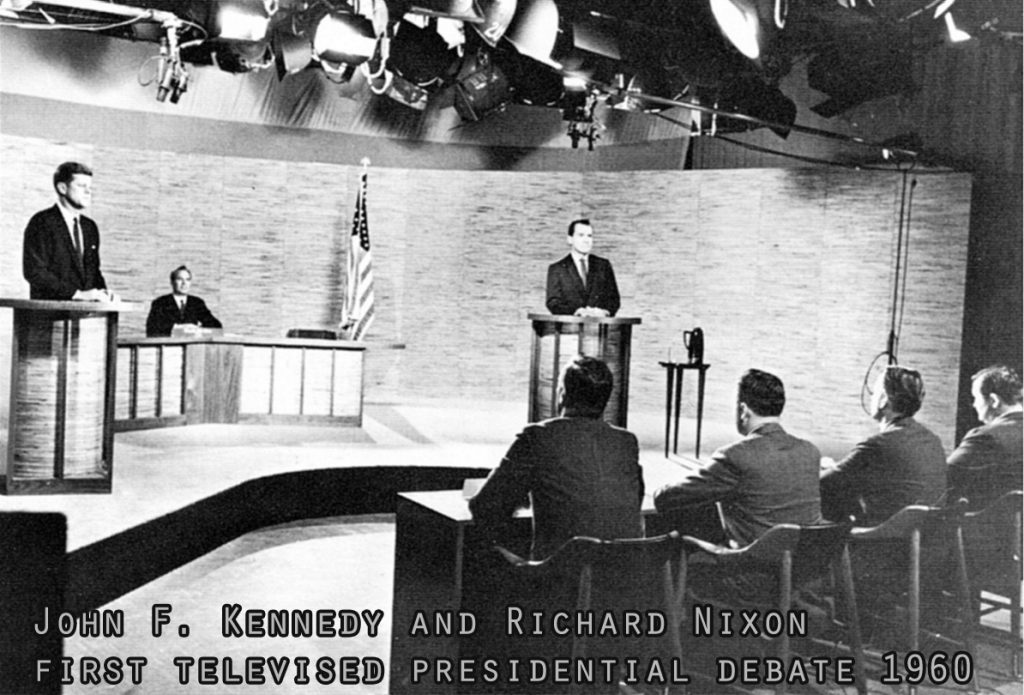
Color bars used in a test pattern, sometimes used when no program material is available. 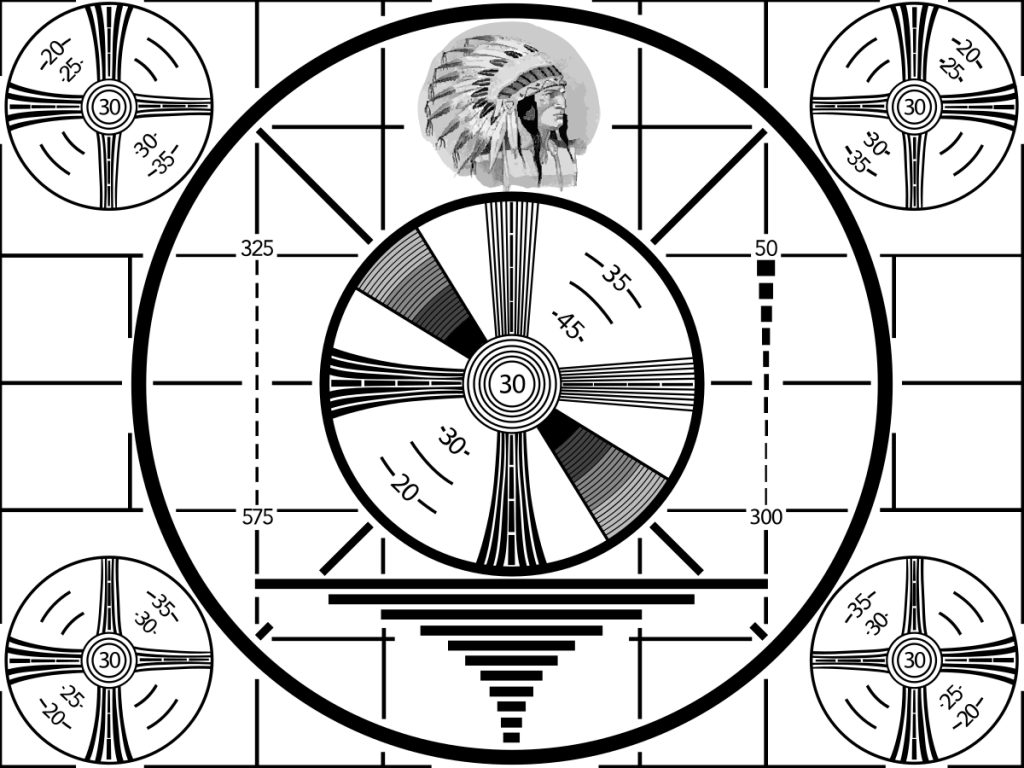
Although all-electronic color was introduced in the U.S. in 1953, high prices and the scarcity of color programming greatly slowed its acceptance in the marketplace. The first national color broadcast (the 1954 Tournament of Roses Parade) occurred on January 1, 1954, but during the following ten years most network broadcasts, and nearly all local programming, continued to be in black-and-white. It was not until the mid-1960s that color sets started selling in large numbers, due in part to the color transition of 1965 in which it was announced that over half of all network prime-time programming would be broadcast in color that fall. The first all-color prime-time season came just one year later. In 1972, the last holdout among daytime network programs converted to color, resulting in the first completely all-color network season.
Early color sets were either floor-standing console models or tabletop versions nearly as bulky and heavy, so in practice they remained firmly anchored in one place. The introduction of GE’s relatively compact and lightweight Porta-Color set in the spring of 1966 made watching color television a more flexible and convenient proposition. In 1972, sales of color sets finally surpassed sales of black-and-white sets.
Color broadcasting in Europe was also not standardized on the PAL format until the 1960s. 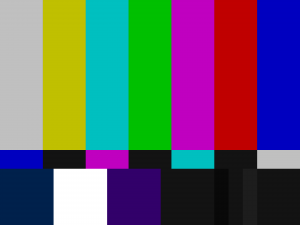
By the mid-1970s, the only stations broadcasting in black-and-white were a few high-numbered UHF stations in small markets, and a handful of low-power repeater stations in even smaller markets such as vacation spots. By 1979, even the last of these had converted to color, and by the early 1980s black-and-white sets had been pushed into niche markets, notably low-power uses, small portable sets, or use as video monitor screens in lower-cost consumer equipment. By the late 1980s even these areas switched to color sets.
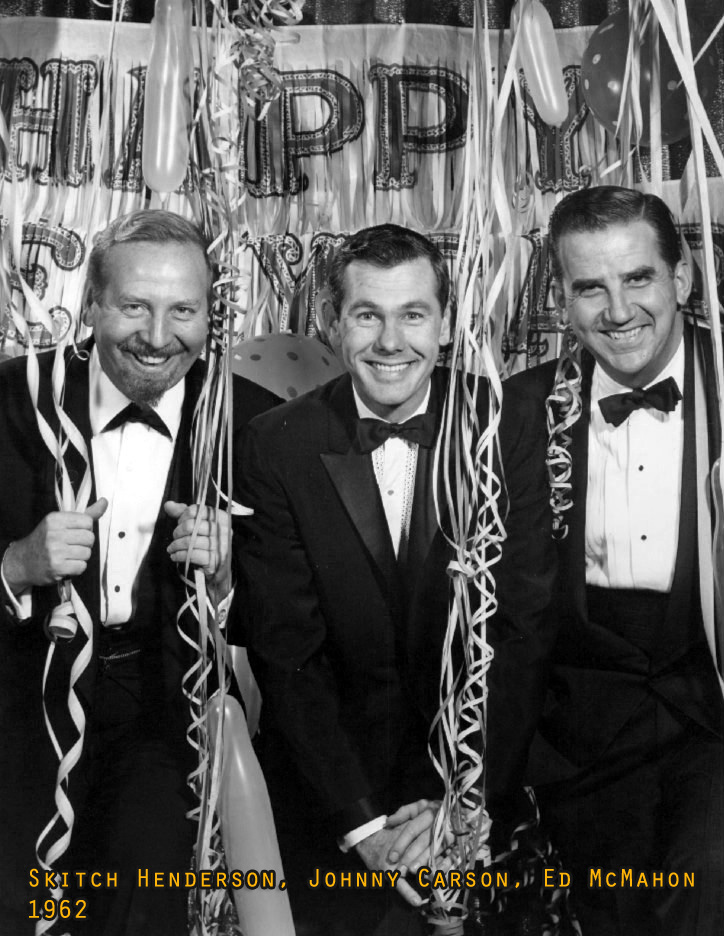 Digital television (DTV) is the transmission of audio and video by digitally processed and multiplexed signal, in contrast to the totally analog and channel separated signals used by analog television. Digital TV can support more than one program in the same channel bandwidth. It is an innovative service that represents the first significant evolution in television technology since color television in the 1950s.
Digital television (DTV) is the transmission of audio and video by digitally processed and multiplexed signal, in contrast to the totally analog and channel separated signals used by analog television. Digital TV can support more than one program in the same channel bandwidth. It is an innovative service that represents the first significant evolution in television technology since color television in the 1950s.
Digital TV’s roots have been tied very closely to the availability of inexpensive, high-performance computers. It wasn’t until the 1990s that digital TV became a real possibility.
In the mid-1980s Japanese consumer electronics firms developed HDTV technology, and the MUSE analog format proposed by NHK, a Japanese company, was seen as a pacesetter that threatened to eclipse U.S. electronics companies. Until June 1990, the Japanese MUSE standard—based on an analog system—was the front-runner among the more than 23 different technical concepts under consideration. Then, an American company, General Instrument, demonstrated the feasibility of a digital television signal. This breakthrough was of such significance that the FCC was persuaded to delay its decision on an ATV standard until a digitally based standard could be developed.
In March 1990, when it became clear that a digital standard was feasible, the FCC made a number of critical decisions. First, the Commission declared that the new ATV standard must be more than an enhanced analog signal, but be able to provide a genuine HDTV signal with at least twice the resolution of existing television images. Then, to ensure that viewers who did not wish to buy a new digital television set could continue to receive conventional television broadcasts, it dictated that the new ATV standard must be capable of being “simulcast” on different channels. The new ATV standard also allowed the new DTV signal to be based on entirely new design principles. Although incompatible with the existing NTSC standard, the new DTV standard would be able to incorporate many improvements.
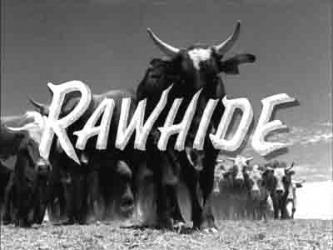
The final standard adopted by the FCC did not require a single standard for scanning formats, aspect ratios, or lines of resolution. This outcome resulted from a dispute between the consumer electronics industry (joined by some broadcasters) and the computer industry (joined by the film industry and some public interest groups) over which of the two scanning processes—interlaced or progressive—is superior. Interlaced scanning, which is used in televisions worldwide, scans even-numbered lines first, then odd-numbered ones. Progressive scanning, which is the format used in computers, scans lines in sequences, from top to bottom. The computer industry argued that progressive scanning is superior because it does not “flicker” in the manner of interlaced scanning. It also argued that progressive scanning enables easier connections with the Internet, and is more cheaply converted to interlaced formats than vice versa. The film industry also supported progressive scanning because it offers a more efficient means of converting filmed programming into digital formats.
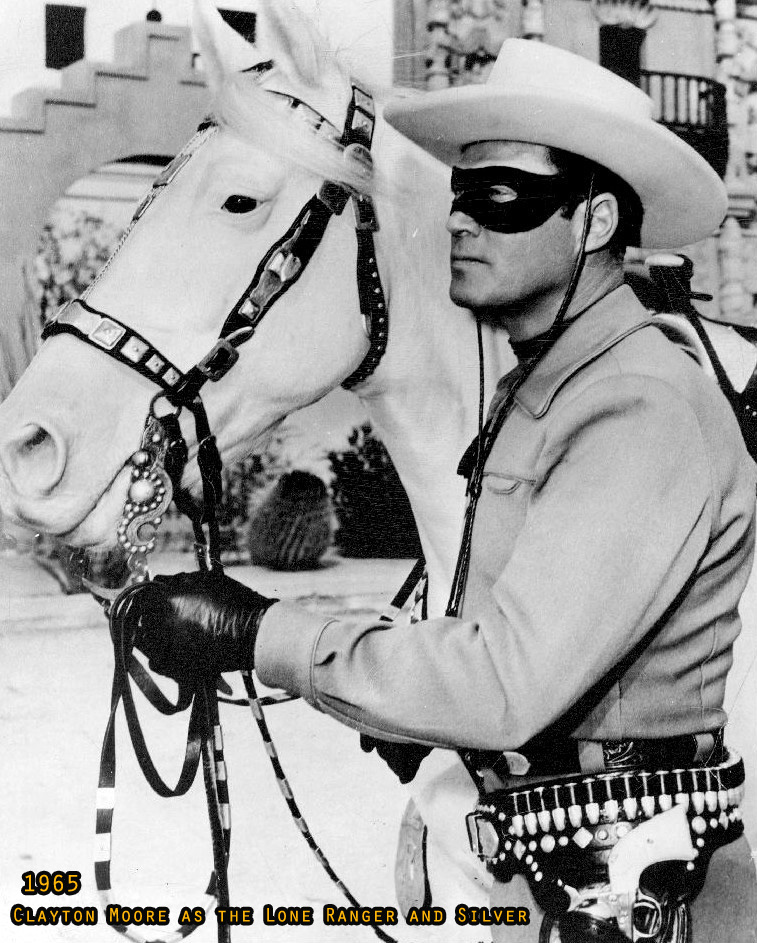
For their part, the consumer electronics industry and broadcasters argued that interlaced scanning was the only technology that could transmit the highest quality pictures then feasible, that is, 1080 lines per picture and 1920 pixels per line. William F. Schreiber, who was a director of the Advanced Television Research Program at the Massachusetts Institute of Technology from 1983 until his retirement in 1990, thought that the continued advocacy of interlaced equipment originated from consumer electronics companies that were trying to get back the substantial investments they made in the interlaced technology.
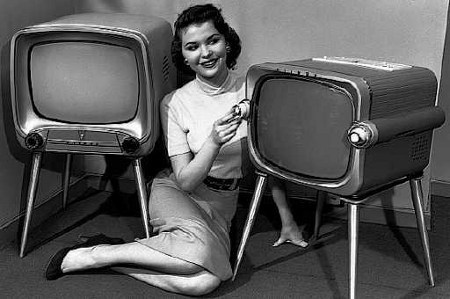 Digital television transition started in the late 2000s. All the governments across the world set the deadline for analog shutdown by the 2010s. Initially the adoption rate was low. But soon, more and more households were converting to digital televisions. The transition is expected to be completed worldwide by mid to late 2010s.
Digital television transition started in the late 2000s. All the governments across the world set the deadline for analog shutdown by the 2010s. Initially the adoption rate was low. But soon, more and more households were converting to digital televisions. The transition is expected to be completed worldwide by mid to late 2010s.
Advent of digital television allowed innovations like smart TVs. A smart television, sometimes referred to as connected TV or hybrid television, is a television set with integrated Internet and Web 2.0 features, and is an example of technological convergence between computers and television sets and set-top boxes.
Besides the traditional functions of television sets and set-top boxes provided through traditional broadcasting media, these devices can also provide Internet TV, online interactive media, over-the-top content, as well as on-demand streaming media, and home networking access. These TVs come pre-loaded with an operating system.
Smart TV should not to be confused with Internet TV, IPTV or with Web TV. Internet television refers to the receiving television content over internet instead of traditional systems (terrestrial, cable and satellite) (although internet itself is received by these methods). Internet Protocol television (IPTV) is one of the emerging Internet television technology standards for use by television broadcasters. Web television (WebTV) is a term used for programs created by a wide variety of companies and individuals for broadcast on Internet TV.
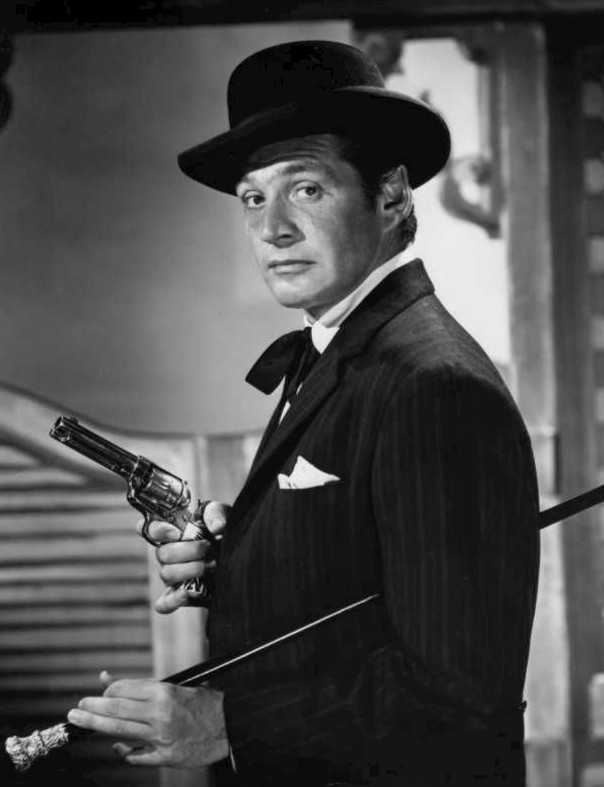
A first patent was filed in 1994 (and extended the following year) for an “intelligent” television system, linked with data processing systems, by means of a digital or analog network. Apart from being linked to data networks, one key point is its ability to automatically download necessary software routines, according to a user’s demand, and process their needs.
Major TV manufacturers have announced production of smart TVs only, for middle-end and high-end TVs in 2015.
3D television
Stereoscopic 3D television was demonstrated for the first time on August 10, 1928, by John Logie Baird in his company’s premises at 133 Long Acre, London. Baird pioneered a variety of 3D television systems using electro-mechanical and cathode-ray tube techniques. The first 3D TV was produced in 1935. The advent of digital television in the 2000s greatly improved 3D TVs.
Although 3D TV sets are quite popular for watching 3D home media such as on Blu-ray discs, 3D programming has largely failed to make inroads among the public. Many 3D television channels that started in the early 2010s were shut down by the mid-2010s.
Terrestrial television
Overview
Programming is broadcast by television stations, sometimes called “channels”, as stations are licensed by their governments to broadcast only over assigned channels in the television band. At first, terrestrial broadcasting was the only way television could be widely distributed, and because bandwidth was limited, i.e., there were only a small number of channels available, government regulation was the norm.
Back to HOME PAGE: https://www.actionsportsmusictv.com/




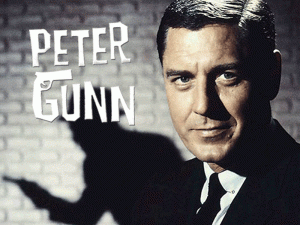

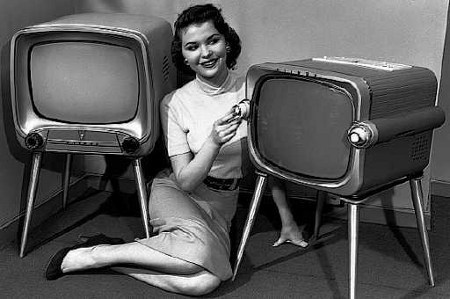 ELECTRONIC TELEVISION
ELECTRONIC TELEVISION

